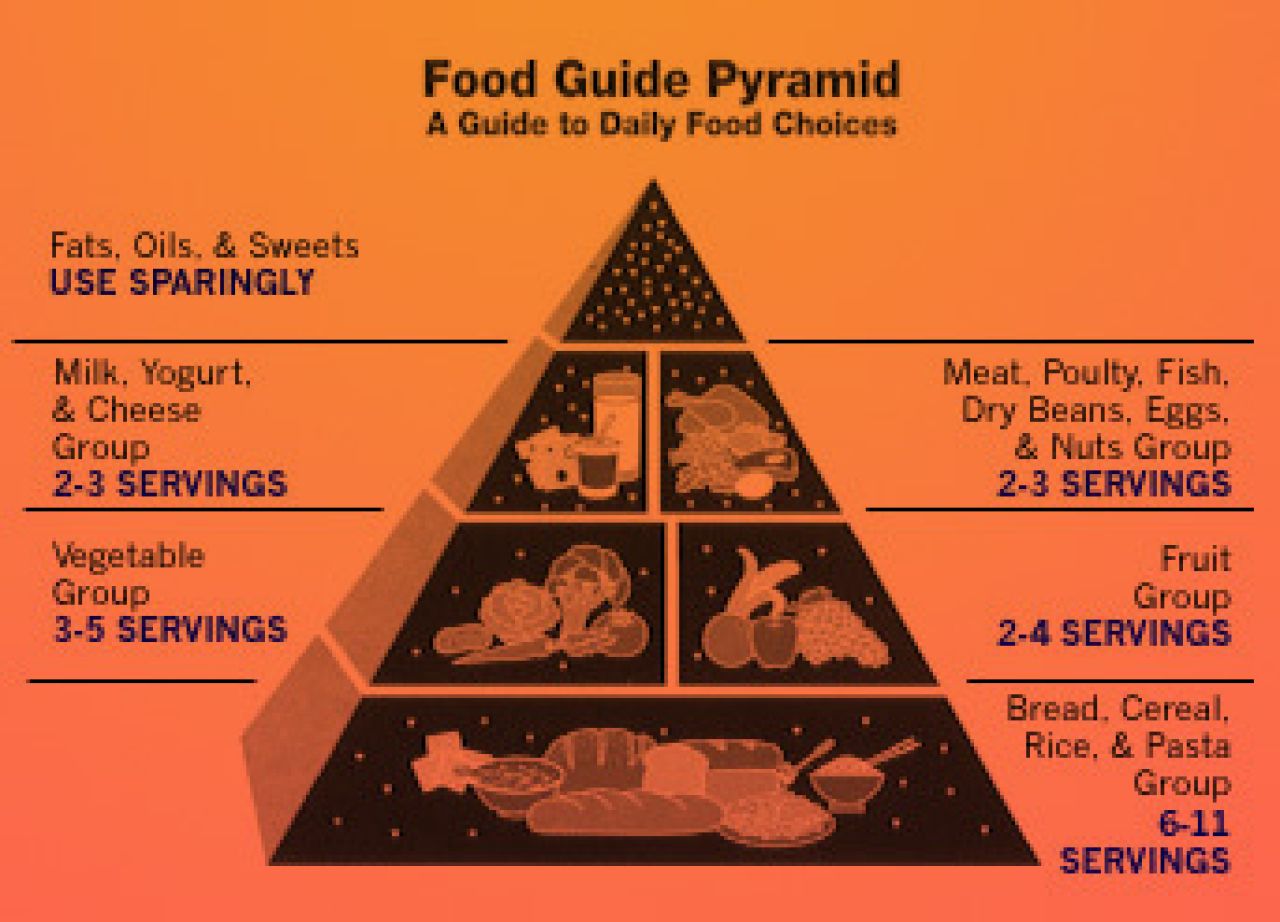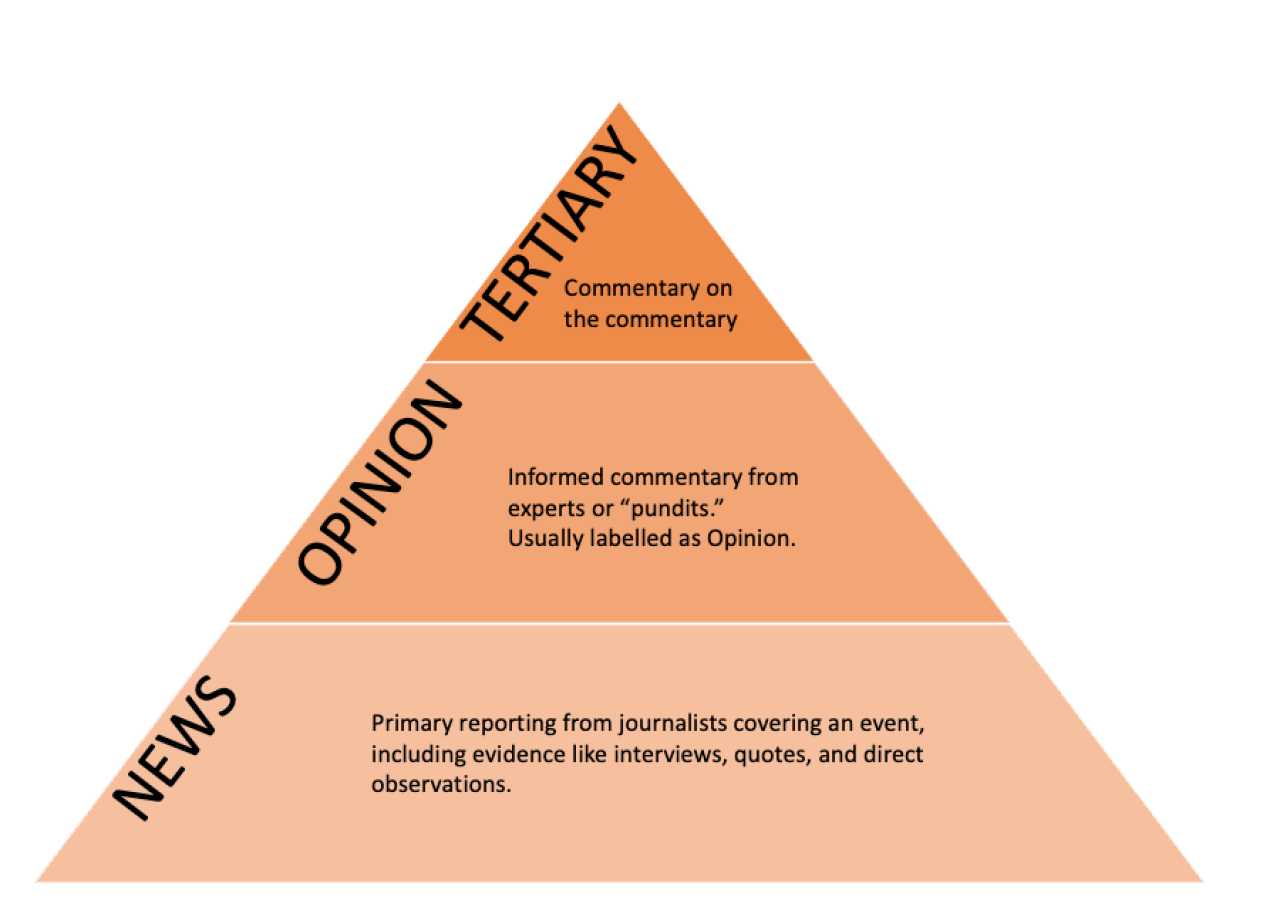November 10, 2023
The "News-tritional" Pyramid
News Resources and Tips

When we think about the news and information we consume every day, it's easy to make the analogy to a diet. News and information is for our minds what food is for our stomachs.
Not all food has the same nutritional value or instant gratification. If we think of the old "food pyramid" that shows healthy, nutritious food at the bottom (the widest part), we can understand that it's best to eat more of foods like grains, vegetables, and fruits. They are not highly processed and might take more work to consume (e.g., peeling, cooking, etc.), but they give us most of the nutrition our bodies need.
Towards the middle of the pyramid we have foods that provide important nutrients, but that should be consumed in moderation, like meats and cheeses. They provide important nutrients, but consuming too much of them can cause their own health problems, like high cholesterol or high blood pressure. These foods tend to be more processed and maybe a take less work to consume than the first group, and they may even provide a little more satisfaction after consuming them, too.
Finally, at the top of the pyramid, are fats, oils, and sweets--foods with negligible nutritional value. The added concern with these foods is not just what they lack, but how much we can grow to crave them. They are highly processed--designed to ring all sorts of bells in our brains, easy to eat, and full of delicious sweetness. But they also rot our teeth, take up space in our bellies that should be filled with more nutritious food, and they might even be a little addictive.
We can apply this framework to news and information, too. At the bottom of the pyramid would be primary news reports--like those from reputable, journalistically ethical, news outlets, like traditional newspapers and news websites. Examples here would be news reports about an event that occurred, results of a vote in Congress, a speech delivered at the White House, or the verdict in a court case. They aren't as flashy, and might take a little more work to consume--they will be more likely to be paywalled--but they keep us informed about our world.
In the middle of our news pyramid might be commentary and opinion pieces like editorials. These secondary sources can be written by knowledgeable people who have studied the issues for a long time or have expertise to apply to it. They can help us better understand the significance of events, validate our beliefs, or give us the opportunity to question them. Since we are often drawn to opinions similar to our own, they can sometimes "go down easier" when we consume them, often because they can brief. And, you will find no shortage of these articles shared on social media, so they will usually be free. But we can consume too much of these sources, since their focus is more on bolstering an argument rather than reporting events.
The internet has brought us an explosion of what I'll call tertiary sources in the news. These are things like blogs and websites with explosive, baiting headlines, and with little in the way of informational value in the ensuing content. Stories might be about what some other commentator said about some event, criticizing their critique, or arguing with their argument. These sources are two levels removed from actual events (think "highly processed") and tend to be written to ring all the right bells in our brains. When these sources land in a mind sympathetic to their perspective, they can be addictive. And they are oh-so-easy to consume and share on social media.
So please: READ YOUR VEGGIES FIRST! :-)

At the bottom of the pyramid would be primary news reports--like those from reputable, journalistically ethical, news outlets, like traditional newspapers and news websites. In the middle of our news pyramid might be commentary and opinion pieces like editorials. At the top, things like blogs and websites with explosive, baiting headlines, and with little in the way of informational value in the ensuing content.
Credit: Jeff Knapp